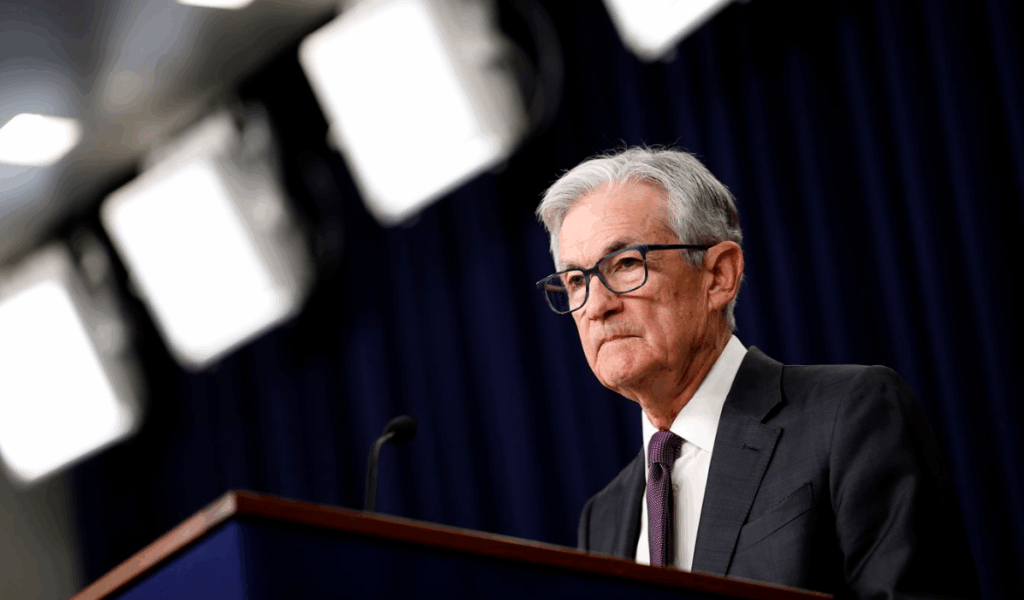- Powell warned that Trump’s tariffs could force the Fed to choose between fighting inflation and supporting growth.
- The Fed is staying cautious for now, with no immediate rate changes planned as it watches how the economy reacts.
- Tariffs are likely to temporarily boost inflation, while early signs show slower GDP growth in Q1.
Federal Reserve Chair Jerome Powell didn’t mince words Wednesday, hinting that the U.S. central bank might be headed for a tricky balancing act—trying to tame inflation while also supporting an economy that’s starting to lose steam.
Speaking at the Economic Club of Chicago, Powell said things are, well, a bit murky right now. The full effects of President Trump’s tariffs haven’t quite materialized, but already there’s talk of slower growth and prices ticking higher. Not exactly the mix you wanna see.
“We may find ourselves in the challenging scenario in which our dual-mandate goals are in tension,” Powell noted, referring to the Fed’s mission to both keep prices stable and push for full employment. “If that were to occur, we would consider how far the economy is from each goal, and the potentially different time horizons over which those respective gaps would be anticipated to close.”
Caught Between Two Goals
The Fed’s in a weird spot. Normally, you tackle high inflation by raising rates. But if growth is flatlining? You might need to cut. With tariffs potentially pushing prices up (but also slowing the economy), Powell admitted the path forward is a bit unclear.
In the post-speech Q&A, he acknowledged tariffs are “likely to move us further away from our goals,” maybe for the rest of the year. But he also didn’t hint at any immediate moves on interest rates, saying the Fed’s in a “wait and see” mode for now.
Markets weren’t thrilled. Stocks dipped, bond yields fell—pretty typical when the Fed chief sounds even mildly unsure.
Tariffs Are Complicating the Picture
Now, economists—Fed staff included—have long said tariffs usually deliver a one-time bump to prices. But Trump’s latest round of sweeping duties could change that. Some stuff, like electric vehicles, are now facing potential tariffs north of 200%.
Powell said the Fed’s key inflation metric is likely to come in around 2.6% for March, above the 2% target. He warned that tariffs “are highly likely to generate at least a temporary rise in inflation,” though they could end up sticking around longer than expected.
It’ll depend, he added, on how fast those effects ripple through the system—and whether inflation expectations stay anchored or start drifting higher.
Growth Is Slowing, But Not Collapsing
Even though inflation’s a concern, Powell didn’t downplay the slowdown in growth either. Early data for Q1 shows the economy has definitely lost some momentum. He pointed to weak consumer spending (except for car sales), and said that a wave of businesses trying to front-run tariffs by importing early probably won’t help GDP numbers much.

Retail sales for March were stronger than expected—up 1.4%—but much of that was folks rushing to buy vehicles before prices rise. According to the Atlanta Fed, GDP might actually show a slight contraction once gold-related trade quirks are adjusted out.
Still, Powell isn’t calling it a crisis. “The economy is in a solid position,” he said, “even if growth slows a bit in the short term.”

















